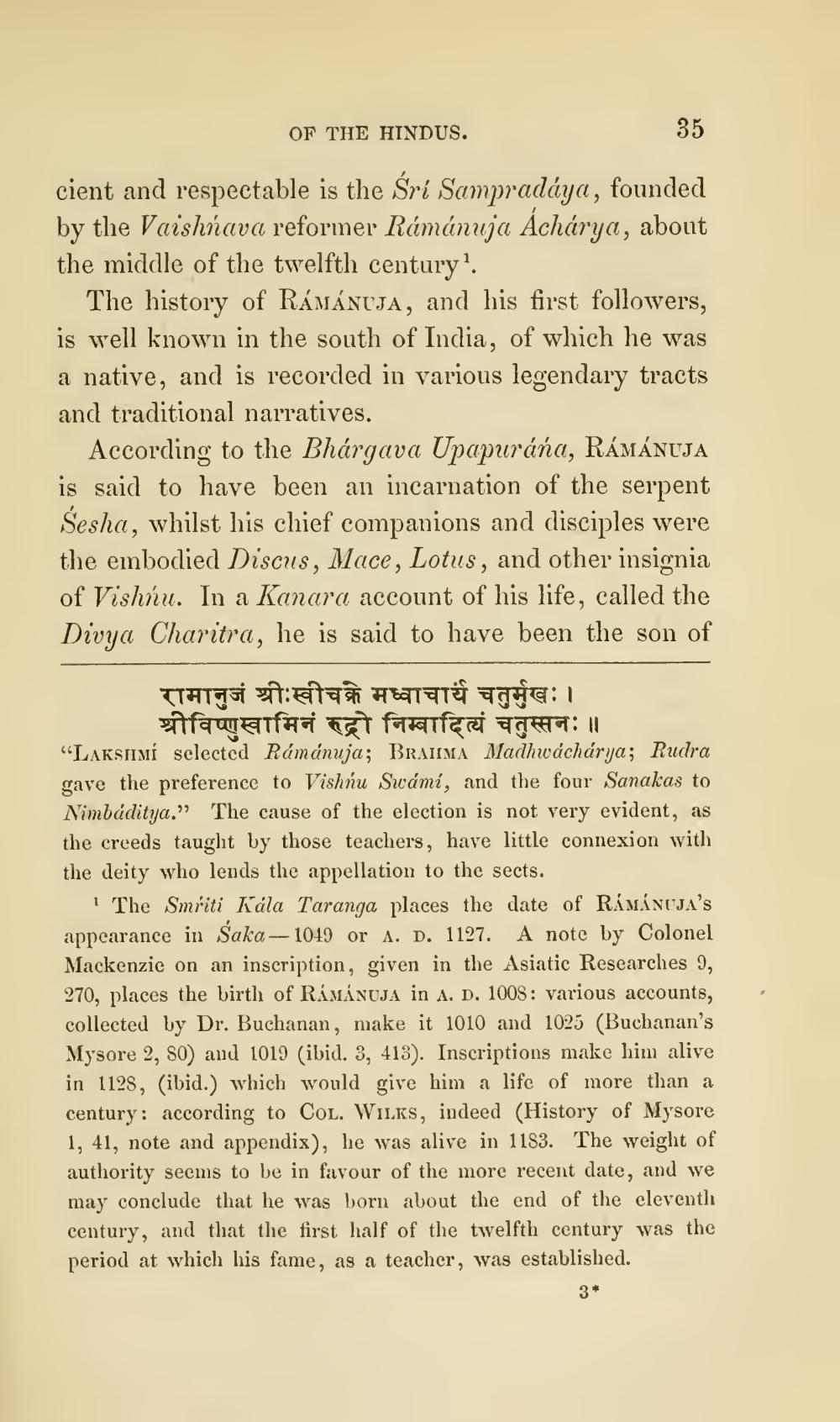________________
35
OF THE HINDUS.
cient and respectable is the Śri Sampradaya, founded by the Vaishnava reformer Rámánuja Áchárya, about the middle of the twelfth century1.
The history of RÁMÁNUJA, and his first followers, is well known in the south of India, of which he was a native, and is recorded in various legendary tracts and traditional narratives.
According to the Bhargava Upapurána, RÁMÁNUJA is said to have been an incarnation of the serpent Sesha, whilst his chief companions and disciples were the embodied Discus, Mace, Lotus, and other insignia of Vishnu. In a Kanara account of his life, called the Divya Charitra, he is said to have been the son of
रामानुजं श्रीः स्वीचक्रे मध्वाचार्य चतुर्मुखः । श्रीविष्णुस्वामिनं रुद्रो निम्बादित्यं चतुस्सनः ॥
"LAKSHMI selected Rámánuja; BRAHMA Madhwáchárya; Rudra gave the preference to Vishnu Swámi, and the four Sanakas to Nimbáditya." The cause of the election is not very evident, as the creeds taught by those teachers, have little connexion with the deity who lends the appellation to the sects.
The Smriti Kála Taranga places the date of RÁMÁNUJA'S appearance in Saka-1019 or A. D. 1127. A note by Colonel Mackenzie on an inscription, given in the Asiatic Researches 9, 270, places the birth of RÁMÁNUJA in A. D. 1008: various accounts, collected by Dr. Buchanan, make it 1010 and 1025 (Buchanan's Mysore 2, 80) and 1019 (ibid. 3, 413). Inscriptions make him alive in 1128, (ibid.) which would give him a life of more than a century: according to COL. WILKS, indeed (History of Mysore 1, 41, note and appendix), he was alive in 1183. The weight of authority seems to be in favour of the more recent date, and we may conclude that he was born about the end of the eleventh century, and that the first half of the twelfth century was the period at which his fame, as a teacher, was established.
3*




